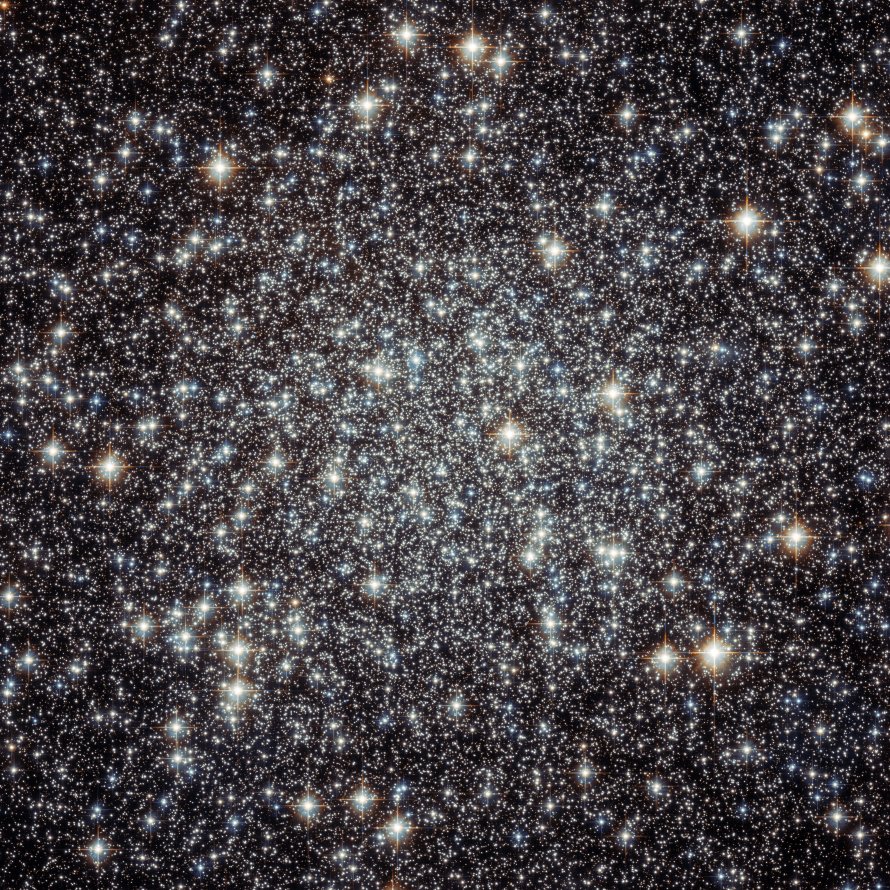M22 (NGC 6656) - Sagittarius Cluster
Messier 22 (NGC 6656), also known as the Sagittarius Cluster, is a globular cluster located in the constellation Sagittarius, in the Galactic Center of the Milky Way Galaxy in the Local Group of galaxies. M22 is 10600 light years away from Earth.
M22 is best viewed during late summer, is magnitude 5.1, and can be viewed with naked eye (barely). M22 is 32' in apparent size. For reference, the full moon is 30'.
Observing difficulty: Easiest
- Name:
- Sagittarius Cluster
- Type:
- globular cluster
- Constellation:
- Sagittarius
- NGC or IC:
- NGC 6656
- Magnitude:
- 5.1
- Viewing:
- naked eye (barely)
- Size:
- 32'
- Distance (light years):
- 10600 LY
- RA:
- 18h 36.4m
- Dec:
- -29 54'
- Season:
- late summer
- Milky Way location:
- Galactic Center
- Galaxy group:
- Local Group
- Messier Marathon #:
- 100
* The naked eye can see up to magnitude ~7-8 objects under ideal dark sky conditions.
A Spectacular Globular Star Cluster
Seated in the constellation Sagittarius, Messier 22 (M22) is one of the most impressive globular clusters visible from the Northern Hemisphere. This celestial object, comprising hundreds of thousands of stars, offers a spectacular sight to amateur astronomers. This article delves into M22's discovery, its physical and stellar characteristics, brightness, and a guide on how to find and observe this cluster.
Discovery and Observation
German astronomer Johann Abraham Ihle discovered M22 in 1665, making it one of the first globular clusters ever identified. Located approximately 10,600 light-years away, M22 offers a visually rich spectacle under the eyepiece, especially in dark-sky conditions.
Physical Characteristics and Magnitude
M22 spans about 70 light-years and is densely packed with an estimated half a million stars. Its stars are so tightly grouped that the cluster's central region is nearly 500 times more concentrated than the neighborhood of our sun. M22 has an apparent magnitude of around 5.1, which makes it visible to the naked eye under optimal conditions. However, binoculars or a small telescope can significantly enhance the viewing experience, transforming the cluster into a sparkling celestial wonder.
Stellar Composition
The majority of M22's stars are older, reddish stars called red giants, but there is also a significant population of blue stragglers - stars that appear younger than they should be given the cluster's age. This age discrepancy is believed to be due to interactions or collisions between stars within the dense cluster. The presence of such stellar anomalies makes M22 a fascinating object of study for astronomers.
Astronomical Significance
Given its relative proximity and high star concentration, M22 is an excellent laboratory for studying stellar dynamics and evolution. Additionally, it's one of the few globular clusters known to house a planetary nebula, which adds to its scientific interest.
Finding and Viewing M22
M22 is located in the constellation Sagittarius, appearing relatively low in the sky for observers in the Northern Hemisphere. It's best observed during summer months when Sagittarius is prominent. To locate M22, find the top of the Sagittarius "teapot" asterism, then look to the northeast. In binoculars, M22 appears as a fuzzy patch, while a small telescope will resolve individual stars on the periphery of the cluster and accentuate its spherical shape.



